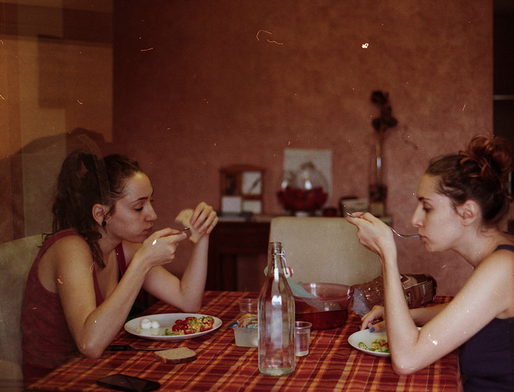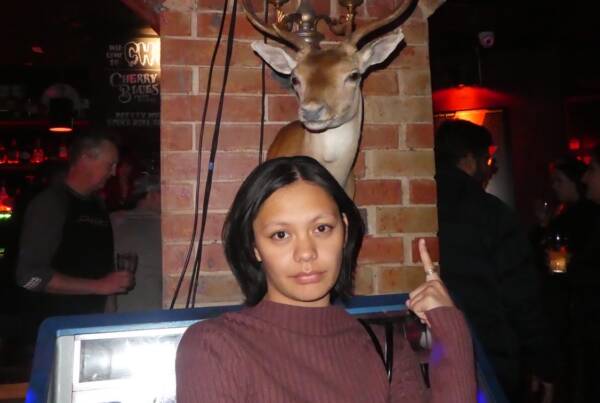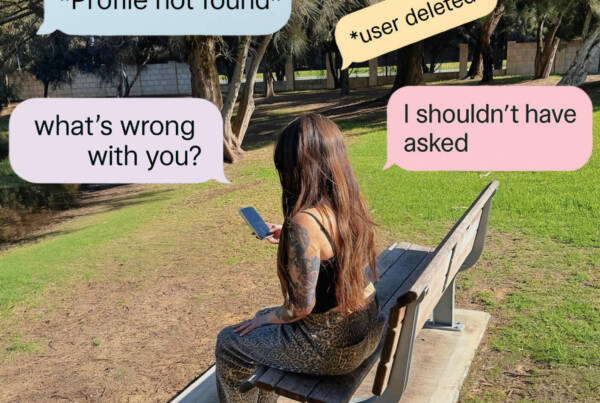Writing by Claire Wastell // Photograph by Stefania Papagni
Politics. That subject that comes up at awkward dinner conversations. Do you ever feel like you don’t know how to contribute to what is being said? Australian politics is confusing enough as it is. The news is bombarded with politicians and ‘she said’, ‘he said’, but to actually figure out the policies behind each party can feel near impossible. Then we head overseas to the erratic Donald Trump and corrupt North Korea. But other than knowing that these leaders have scary tendencies, I felt like I couldn’t add any factual evidence to back up my opinions. This article aims to give the low-down on basic Australian politics in a way that makes sense—how it’s made up, how voting works, and what the major parties views are on the issues we care about.
Firstly, let’s look at Australia’s political system. Australia is a federation, which means that there is combination of shared rule for some purposes and regional self-rule for others, occurring within a single political system so that neither is subordinate to the other. We have an overarching allegiance to the Head of State, The Queen, which coordinates with Australia through the Governor General. Internally, we have 3 levels of government responsible for different things at a Federal, State, and Local level, and a parliamentary system consisting of a Cabinet, House of Representatives, and Senate, led by the Head of Government. Confusing, hey? So when we vote, we vote for all these different levels at different times, but each are responsible for different roles. For example, local government works with rubbish collection, while the Federal Cabinet determines how our taxes are used.
Federal voting is often the most talked about level of government. In Australia we have a type of voting called the ‘single transferrable vote’, which is designed to achieve proportional representation through ranked voting in a multi-seat parliament. This is aimed at making parliament better represent the population of Australia. So when we vote for our local MP (Member of Parliament) we are voting not only for the party they represent, but also the person who will stand for us in the House of Representatives.
When you vote for the senate, Australia is unique as you can either vote for the parties, or the representatives of the parties. But what does it all mean? Labour and Liberal have seemed to converge on so many issues these days the BIG issues that hit the media in the lead up to election time all seem rather trivial because mostly, the policies are pretty close. This is a big change compared to huge left and right divisions of the past decades when communism was more popular and the world was divided more bi-laterally between Communist states and democracies. Now as the world is more unilateral with the growth of democracies and dominance of the U.S as a super State, it seems that policy issues are becoming increasingly similar between parties, making it harder to choose a party to side with. It is more difficult to identify with a party or know what their policies are because all the parties converge in order to try and claim the ‘median voter’. This is because in a two party system, the party at the median position wins a majority of votes against a party at any position on a spatial model measuring issues and density of preferences. Ultimately all parties want to win and they change their preferences to try and capture our votes, even if this means losing their key ideals.
So what’s happening at the moment? The Liberal government is currently in power with Malcolm Turnbull as our Prime Minister. But what are the current government’s stance and actions over these issues?
- The rise of One Nation: Um Pauline Hanson. I mean I have seen the countless memes on Facebook about her radical politics to pretty much go all-Hitler and wipe out Muslims in Australia, but what is she actually on about? One Nation Right Wing conservative values aims to ‘make Australia great again’ by restoring national sovereignty and constitutional law. This includes policies that ban Islamic immigration, limit all immigration, ignore Indigenous recognition, scrap renewable energy goals, withdraw from the U.N, ban foreign investment, and leaving trade groups, a tax reform. The party only has influence in West Australia and Queensland, and it seems the people voting for her are those interested in keeping small local businesses to provide jobs for locals and because the other options seem to not be appealing. In addition to this the growing fear of terrorism and groups such as ISIS has sparked an appeal in the party’s xenophobic ideals. One Nation has been in out of the political polls since they were formed in 1997, and have always been a controversial group. In the recent year their influence has grown with with their first preferential vote increasing in WA by 4.86% and contesting 35/59 lower house seats. But ultimately while their party remains small and it seems easy to downplay their influence, there is growing concern of a changing culture within Australian Parliament. We are seeing leaders of major parties, particularly The Liberal National Party, making allowances for Hanson and moving more to the right to try and recapture her voters or to try and get her to support on various policy issues. A number of poc have also discussed the increased racism they have experienced since One Nation’s return to parliament, as the party’s presence is used by individuals to validate their racism. It is interesting to note the rise of extremist groups in times when Labor and Liberal parties (and their voters) seem to be converging or confused over their policies preferences with no clear identity. This has lead to some voters who would usually choose these groups vote for other independent groups—such as The Greens, independent candidates, and One Nation. Although they may not agree with all the parties preferences it seems like the best option.
- Cost of living, Housing and the economy: All people seem to be saying is that as a young person I will never, ever be able to afford a house. And then, of course, we all panic and question whether it is worth quitting our study and day job, and moving to Thailand. But really, what are the facts behind this issue and what is the government doing about it? In March this year house values rose another 1.4% across Australia, reaching a 7 year high while the cost of living in Australia is approximately 11.5% higher than the U.S. In order to try to redeem this, the government budget resulted in property investors being hit with a string of cutbacks as parallel measures try to aid first home buyers entering the residential market. It also imposed a 50% cap on foreign ownership in new property developments in order to ‘increas[e] the housing stock for Australian purchasers’. First home buyers are also now able to use their voluntary superannuation contributions to build tax protected savings for a home deposit. Despite these efforts, however, prices keep rising and although the price of housing is predicted to slow, the cost of living remains high.
- Climate change and energy policy: Climate Change. Pretty damn relevant I say with discussions around the world ending and glaciers falling from ice melting seem to swarm the media. But what is Australia doing about it? Well, despite the government reviewing its climate change policies to take stock of Australia’s progress in reducing emissions, and ensure the Government’s policies remain effective in achieving Australia’s 2030 target and Paris Agreement commitments, the 2017 budget axed research to help Australia adapt to climate change. Some parties even refuse to admit the existence of climate change, and it’s no help that Donald Trump withdrew from the Paris Agreement when they are the superpower of the world. The Australian government is also refusing to halt the development of the Adani Coal Mine, which is expected to produce up to 2.3 billion tonnes of coal extracted from an area five times the size of Sydney Harbor over 60 years. This is equivalent to putting out 7.7 billion tonnes of greenhouse gases, while destroying the Great Barrier Reef in the process. Despite pressure from NGO’s, the U.N, and Australia’s commitment to reduce climate change, it seems likely that the project will go ahead. Many groups, such as the Australian Youth Climate Coalition and Greenpeace, are fighting the proposal, and if you feel passionate about the issue it’s worth checking out events and projects that these groups are organising.
- Donald Trump and Malcolm Turnbull: Trump. That man we all joke about. But how have his actions influenced Australian politics? Firstly his move to withdraw the U.S from the 12-country Trans-Pacific Partnership is very influential to Australia’s trade, as it is the key plank in our nation’s trade policy as the largest trade agreement in history. The agreement, however, is currently suffering as a result of trump’s decision to leave, but it has also opened up room for China to enter. Trump’s policies, such as the tariffs on Chinese and Mexican imports, have been predicted to increase unemployment, and drop the worth of the Australian dollar. Leaving the Paris Climate Agreement also further emphasises how conservative governments are less focused on working towards reducing fossil fuels. Meanwhile, Trump’s views on immigration, race, and homosexuality are influencing the backward populist views of the Australian population. What seems to be the thing to watch out for is Trump’s actions with China, being our close neighbor, and also the relationship with Russia due to their State’s size and influence.
- Refugees: It seems that the news is constantly filled with violence, wars, and danger, but where are all the people stuck in the middle of it going? The refugee crisis continues, and what is Australia doing about it? Overall, Australia has performed poorly. In 2015, the government resettled 9,399, 2,171 fewer than the previous year. In this year’s budget, they did not address the growing crisis and in sad invested $1.91B into off-shore processing, despite this being harmful to asylum seekers. In documenting the harsh nature of the conditions in the detention centres, Amnesty International noted the detrimental physical and mental health impacts of indefinite detention on the asylum seekers. The poor conditions and treatment of those in off-shore processing facilities on Manus Island and Nauru has caused these facilities to be shut, and for refugees to either be moved to the East Lorengau Refugee Transit Centre in PNG, or to the U.S after discussing a deal with the U.S in 2016. The government refuses to report on how many people are still living in Nauru, and the conditions they are living under after these places breached the right to personal liberty in the PNG constitution, as well as the UNHCR. They have also reportedly started to switch off electricity and shut down services in the camps in an effort to force refugees out, without providing any solutions for resettlement. Despite all this, in September 2015, the Government announced that it would make additional 12,000 humanitarian places available to refugees from the crises in Syria and Iraq, and in March 2017, it was announced that the Government finalised granting all 12,000 visas, however some people are yet to arrive. Most asylum seekers who came to Australia by boat after 13 August 2012 waited for well over three years for the opportunity to lodge a protection application. While the Government has made changes to the RSD to decrease this time in May this year, the Minister for Immigration announced that if people fail to apply for protection visas by 1 October 2017, they will be barred from applying for any temporary or permanent visa in Australia and should return to their home countries and that these processing claims will take at least until the end of 2018.
So that’s a lot of information to take in, but it’s always important to know the facts to ensure that we know our own views, and can talk about them too! It is always hard to find the right information, especially with our busy lives, and to identify the key points among the mass media and useless gossip of our local politicians. I hope this article has provided the facts and answers to some questions so that the next time politics comes up at the dinner table, you will know what to say.







